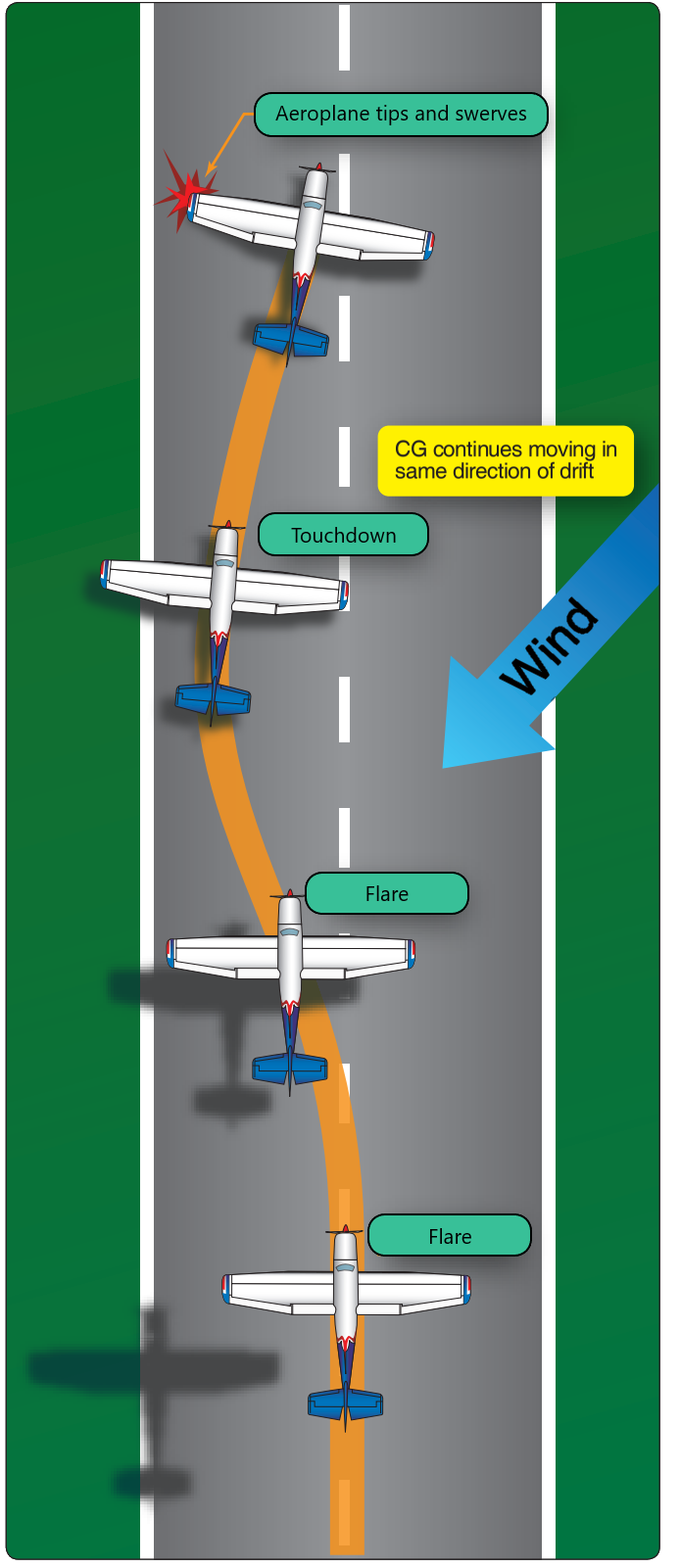Straighten up and fly right!
- Mar 21, 2022
- 2 min read
Updated: Jan 21, 2023
Why it's important to make sure the aircraft is straight before touching down.
Whilst it is a normal part of crosswind landings to approach the runway in a crab, the aircraft must be straightened out before it is allowed to touch down. If the flare and touchdown are made without correcting for drift, or the aircraft is still in a crab, it will contact the ground whilst moving sideways. This will impose a strong side load on the landing gear which not only causes an uncomfortable landing, but can also damage the tyre and if severe enough, may cause structural damage.
An aircraft touches down whilst crabbing (with an audience).
The pilot should prevent the aircraft from drifting by using the wing-low method. It requires the pilot to drop the into-wind wing somewhat to counteract the drift, whilst using rudder to ensure the aircraft is pointing straight ahead. This method aligns the longitudinal axis of the aircraft with the runway and the direction in which the aircraft is moving. If this technique is not applied, the result will be that the aircraft is still drifting or crabbing (or both) at touchdown.
When the aeroplane lands with a side load, the main wheels' tyre tread resists the sideways movement. Consequently, the sideways velocity of the aeroplane is rapidly decelerated, causing the aircraft to shift to the right due to the inertia force. When the main wheel contacts the ground, a moment is created around it, tending to tip or overturn the plane. If the into-wind wing is lifted up by this moment, then the entire weight and shock of the landing is applied to one wheel, possibly resulting in structural damage. In the case of a crosswind, there is also a sideways force acting on the fuselage surface behind the main undercarriage, encouraging yaw into wind (weathercocking). The result is likely to be a ground loop, especially in the case of a tailwheel aircraft.


A ground loop is defined as an uncommanded turn during ground operations. It can occur during any operation on the ground, it is most common during the landing roll-out. Although weathercocking and drifting does not always cause a ground loop, they often cause the initial swerve. The tailwheel aircraft is more prone to ground looping because the centre of gravity is located aft of the main landing gear.
What to do if the aircraft touches down whilst drifting or crabbing.
If the aeroplane touches down whilst drifting or crabbing, the pilot should apply aileron towards the high wind and stop the swerve with application of rudder. The brakes should only be used if the application of rudder is insufficient. If they are used, they should be applied on the side of the lower wing to prevent the aircraft from swerving. Note that the use of brakes can cause the pilot to over control and actually make the situation worse.
Are you a student pilot? Whether you're learning to fly aeroplanes, helicopters or microlights - we'll get you through the written exams first time with confidence. Check out the video below to learn more.


Comments